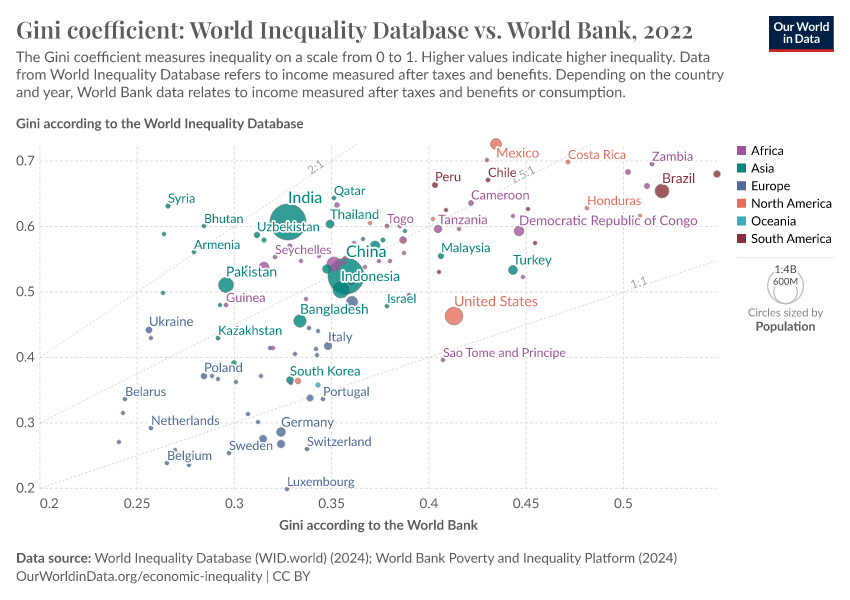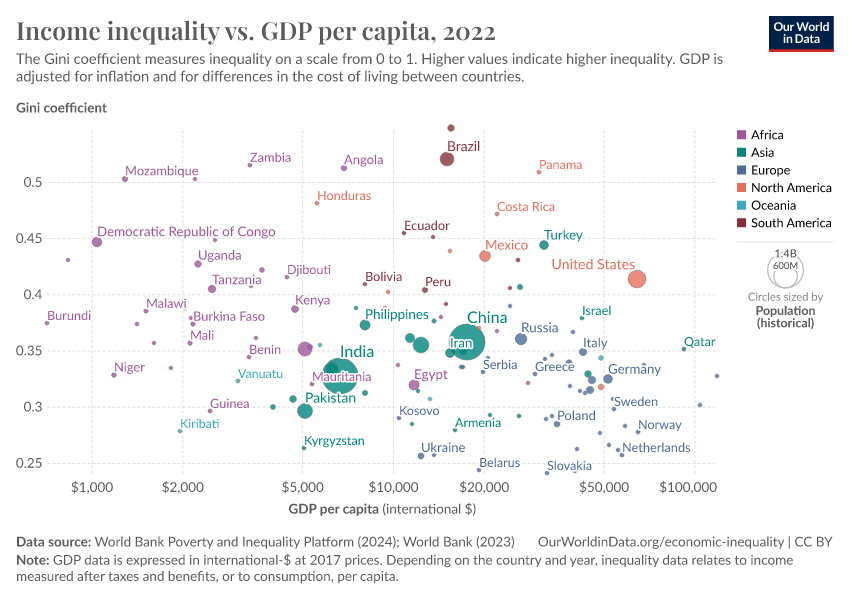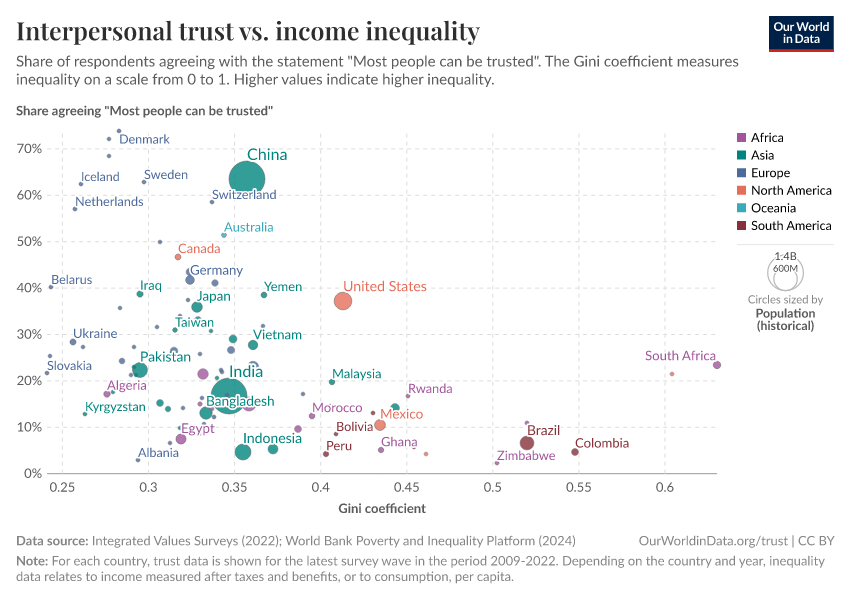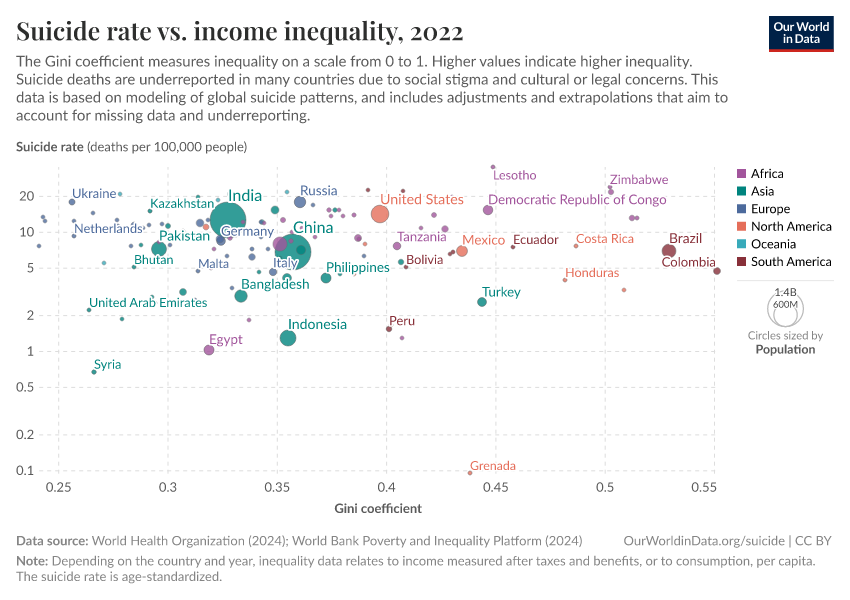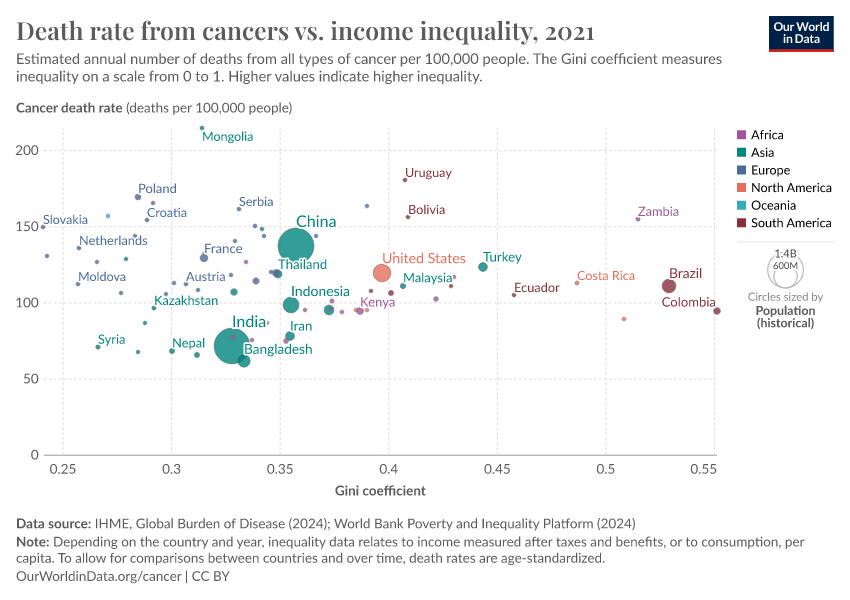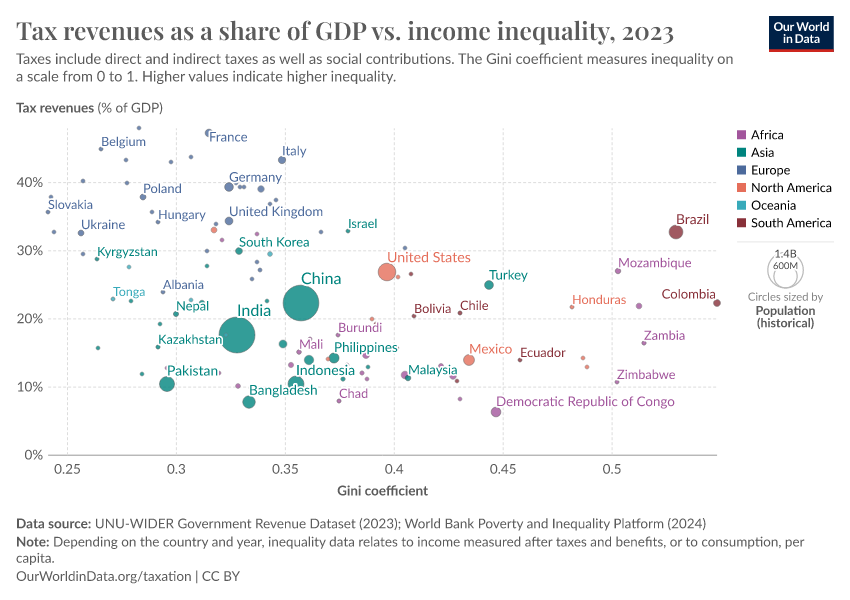Income inequality: Gini coefficient
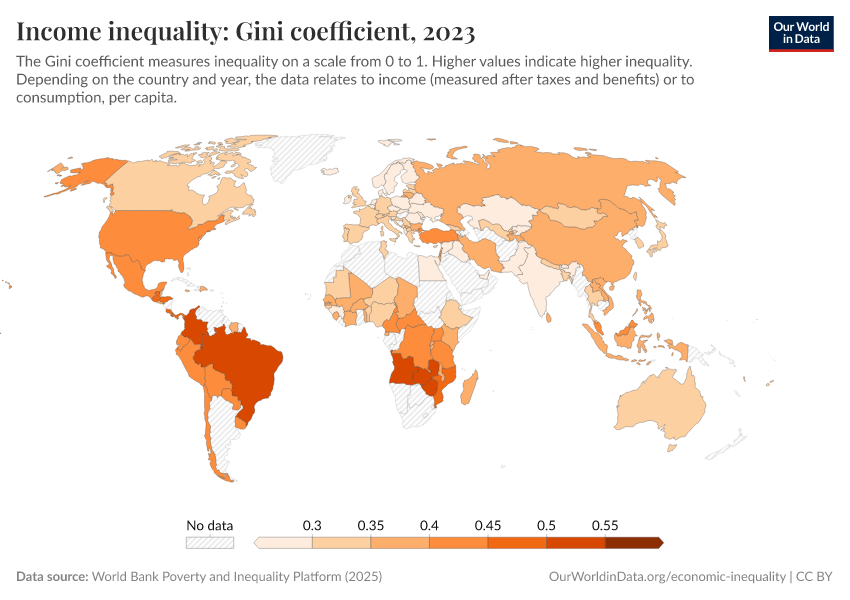
What you should know about this indicator
- Depending on the country and year, the data refers either to income (after taxes and benefits) or to consumption, per capita. For most countries, we have only one option available. But when there is a mix of consumption and income data points, we process the data to keep one observation per country and year.
- Many people, today and in the past, have no monetary income. This data accounts for this by including the estimated value of non-market income, such as food grown by subsistence farmers for their own use.
Related research and writing
What you should know about this indicator
- Depending on the country and year, the data refers either to income (after taxes and benefits) or to consumption, per capita. For most countries, we have only one option available. But when there is a mix of consumption and income data points, we process the data to keep one observation per country and year.
- Many people, today and in the past, have no monetary income. This data accounts for this by including the estimated value of non-market income, such as food grown by subsistence farmers for their own use.
Frequently Asked Questions
What are international-$ and why are they used to measure incomes?
Much of the economic data we use to understand the world, such as the incomes people receive or the goods and services firms produce and people buy, is recorded in the local currencies of each country. That means the numbers start out in rupees, US dollars, yuan, and many others, and without adjusting for inflation over time. This is known as being in “current prices” or “nominal” terms.
How comparable is the World Bank data on household incomes across time or between countries?
Because there is no global survey of incomes, researchers need to rely on available national surveys. Such surveys are designed with cross-country comparability in mind, but because the surveys reflect the circumstances and priorities of individual countries at the time of the survey, there are some important differences. In collating this survey data the World Bank takes steps to harmonize it where possible, but comparability issues remain.
How does the World Bank produce global and regional estimates of poverty and inequality from national data?
Sources and processing
This data is based on the following sources
How we process data at Our World in Data
All data and visualizations on Our World in Data rely on data sourced from one or several original data providers. Preparing this original data involves several processing steps. Depending on the data, this can include standardizing country names and world region definitions, converting units, calculating derived indicators such as per capita measures, as well as adding or adapting metadata such as the name or the description given to an indicator.
At the link below you can find a detailed description of the structure of our data pipeline, including links to all the code used to prepare data across Our World in Data.
Notes on our processing step for this indicator
For most countries in the dataset, estimates relate to disposable income or consumption, for all available years. Several countries, however, have a mix of income and consumption data points, with both data types sometimes available for particular years.
In most of our charts, we present the data with some data points dropped to present a single series for each country. This allows us to make readable visualizations that combine multiple countries. In choosing which data points to keep, we strike a balance between maintaining comparability over time and showing as long a time series as possible. As such, the exact approach varies across countries.
Reuse this work
- All data produced by third-party providers and made available by Our World in Data are subject to the license terms from the original providers. Our work would not be possible without the data providers we rely on, so we ask you to always cite them appropriately (see below). This is crucial to allow data providers to continue doing their work, enhancing, maintaining and updating valuable data.
- All data, visualizations, and code produced by Our World in Data are completely open access under the Creative Commons BY license. You have the permission to use, distribute, and reproduce these in any medium, provided the source and authors are credited.
Citations
How to cite this page
To cite this page overall, including any descriptions, FAQs or explanations of the data authored by Our World in Data, please use the following citation:
“Data Page: Income inequality: Gini coefficient”, part of the following publication: Joe Hasell, Bertha Rohenkohl, Pablo Arriagada, Esteban Ortiz-Ospina, and Max Roser (2023) - “Economic Inequality”. Data adapted from World Bank Poverty and Inequality Platform. Retrieved from https://archive.ourworldindata.org/20251209-133038/grapher/economic-inequality-gini-index.html [online resource] (archived on December 9, 2025).How to cite this data
In-line citationIf you have limited space (e.g. in data visualizations), you can use this abbreviated in-line citation:
World Bank Poverty and Inequality Platform (2025) – with major processing by Our World in DataFull citation
World Bank Poverty and Inequality Platform (2025) – with major processing by Our World in Data. “Income inequality: Gini coefficient – World Bank” [dataset]. World Bank Poverty and Inequality Platform, “World Bank Poverty and Inequality Platform (PIP) 20250930_2021, 20250930_2017” [original data]. Retrieved December 17, 2025 from https://archive.ourworldindata.org/20251209-133038/grapher/economic-inequality-gini-index.html (archived on December 9, 2025).